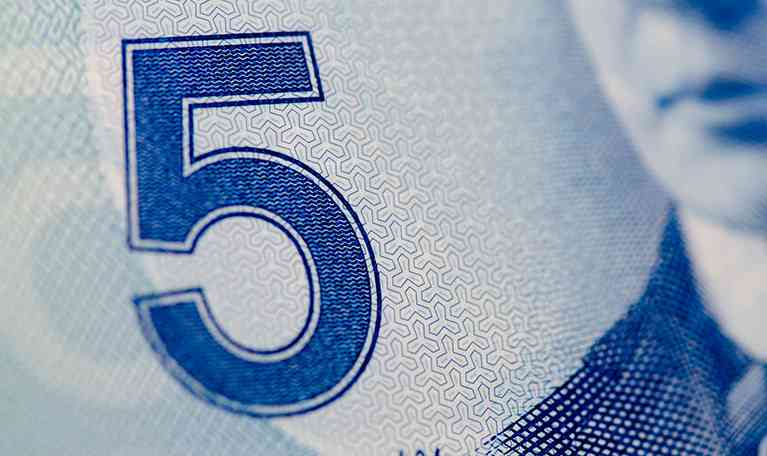Friday’s Canadian data releases saw the latest Canadian CPI Inflation and Retail Sales figures for the country fall short of the BOC’s expectation and sent the Canadian Dollar into a tailspin with Canadian Dollar Exchange rates losing traction against a handful of major currencies.

Market makers were hopeful of more buoyant figures in order to keep scope for further interest rate rises in sight.
Where are markets expecting more from Canadian CPI figures?
Investors had been gearing up for this month’s CPI inflation data to provide further cause for an interest rate rise. Unfortunately, Septembers figure fell short. The data reading was expected to show inflationary growth at 0.3% this month, however, the figure missed expectation reaching just 0.2% and providing doubts for a further interest rate hike.
Regardless of this month week CPI growth prices in Canada have increased with inflation up 1.6% annually. Key growth contributors include transport, up 3.8%. Fuels costs up 14.6% annually, increases up predominantly to line disruption by hurricanes Harvey.
Encouragingly consumer prices have also increased on the year up from 0.9% in August to 1.4% this month.
Canadian retail sales slow following buoyant August
Canadian retails figures came back to earth with a bump on Friday following Augusts reading which largely surpassed expectation reaching 0.7% against a target of 0.0%. This positive data from last month was not to be repeated and Canadian retail sales figures correctly dramatically, declining to -0.7% against a target of 0.3%.
The decline was attributed to lower food and beverage sales with a decline of -2.5% seen in this sector. Another area that felt the pinch was the home renovation and garden improvements markets with stores seeing at a dip of -1.9%.
Sectors that performed better included the Canadian motor industry which increased 0.7% and Clothing stores which increased 0.5%.
Canadian exchange rates performed badly following the data releases
Over the last year the Canadian Dollar has enjoyed sustainable gains against the US Dollar. Annually the Loonie is up around 7% against the US Dollar. Fuelled by the countries growth Canada has exceeded expectations and forced the Bank of Canada to raise rates to 1.00%. As with other nations, Canada has struggled to get inflation to a comfortable level and the latest weak data will do little to underpin another rate hike.
Following Friday’s data releases Canadian Dollar exchange rates struggled against a batch of currencies, notably the US Dollar immediately losing 0.6% following the data announcements.
The Canadian Dollar also endured some fairly heavy losses against the GBP and EUR. Canadian Dollar sliding significantly against the Pound. On Thursday GBP/CAD was trading between a range of 1.64.79 and 1.6389 it now sits at 1.6650 an increase of 1.35% despite the fortunes of the Pounds.
The movement was also seen against the Euro with Canadian Dollar Exchange Rates slipping against the single currency. The EUR/CAD moving from 1.4752 to 1.4831 in the hours following the Canadian Data releases. The Euro continued to benefit from the Canadian Dollars weak data with Markets closing at 1.4879.
Bank Of Canada – interest rate decision
The likely hood of another Canadian Interest Rate suffered following the Fridays Retails sales and CPI data. Odds of No rate rise climbed from 73% to 81% on Friday with markets leaning resoundingly toward no change.
Many still anticipate a rate hike in 2017 with the December the being the favoured month. The probability of a Canadian Interest Rate Rise in December is around 50%
Concerns around the future of NAFTA
Although the main attributers to Canadian Exchange Rates dip had been Friday’s weak data many questions remain around NAFTA. The scenario has become unclear as Trump has eluded to desiring bilateral agreement, which is expected to be rejected by Canada and Mexico.
Whilst none of the parties would be willing to walk out the lack of progress remains a concern. The disbanding of NAFTA would hurt all involved and during the week it was reported that talks could extend the allocated end of 2017 deadline.
In typical Trump fashion negotiations thus far have been fraught and there would appear to be little signs of progress.
One area of contention Canada circled with around dairy production to which Canada offered 3.25% of its inventory. Trump however sharply said he needed 10 times that. The future of NAFTA, therefore, would appear to be uncertain which would be a great shame. The agreement that far has stood for 23 years and allowed Mexico, Canada and the US to not just be a close geographical neighbour by powerful trading allies.